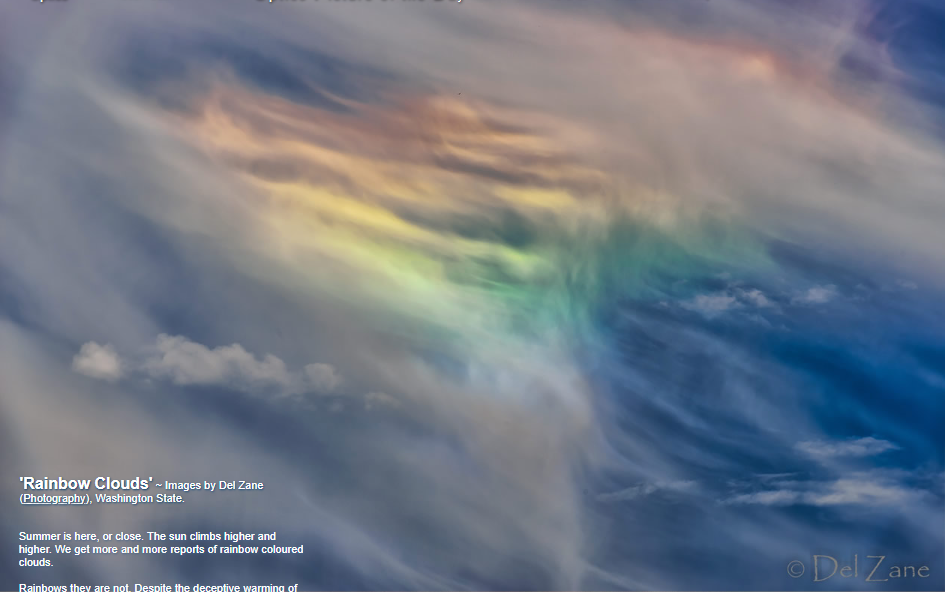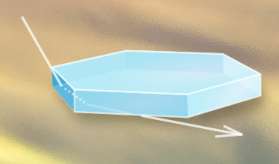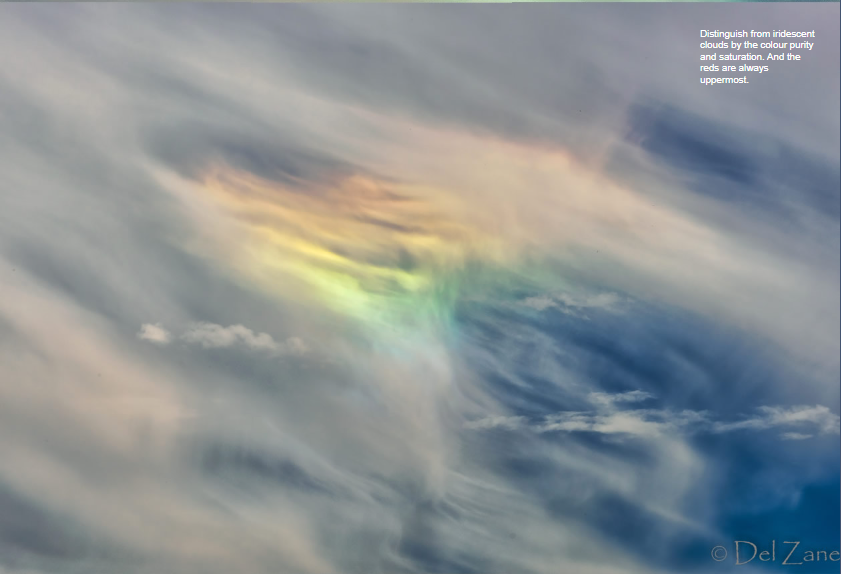Rainbow Clouds, summer's circumhorizon arcs - OPOD
Rainbow Clouds: Exploring Summer's Circumhorizon Arcs
As summer approaches, the sun ascends higher into the sky, casting its warm glow upon the earth. With the changing season, we are often treated to a mesmerizing display of rainbow-colored clouds. However, these vibrant spectacles are not actually rainbows, but rather a phenomenon known as circumhorizon arcs.
Circumhorizon arcs are enormous halos that form when ice crystals in high-altitude cirrus haze and clouds interact with sunlight. These ice crystals, typically found in thin patches of cirrus clouds, create fragments of the arc, illuminating a brilliant spectral band parallel to the horizon and extending partially across the sky.
To witness this awe-inspiring sight, certain conditions must be met. The sun must be positioned at an elevation higher than 58°, and relatively low latitudes are necessary. To observe the circumhorizon arcs, one should look beneath the sun around noon. In regions less fortunate, these arcs can only be glimpsed near the summer solstice. However, at higher latitudes, where the solar circumhorizon arcs remain elusive, the tilted orbit of the Moon may generate a similar phenomenon.
The formation of circumhorizon arcs relies on hexagonal plate crystals drifting with their large faces nearly horizontal. As sunlight enters these crystals, it passes through a vertical side face, travels through the ice, and exits through the lower horizontal facet. This journey through the crystal acts as a prism, dispersing the colors widely and with remarkable purity.
One way to distinguish circumhorizon arcs from iridescent clouds is by their color purity and saturation. Additionally, the uppermost colors in these arcs are always shades of red. These characteristics set them apart from other atmospheric optical phenomena.
It is important to note that while this article has been automatically converted from the old site and may not appear as intended, you can find the original article here.
In summary, the captivating rainbow-colored clouds that grace our summer skies are not true rainbows but rather fragments of circumhorizon arcs. These arcs form when ice crystals in cirrus clouds interact with sunlight at specific angles and latitudes. The resulting display showcases a vibrant band of colors parallel to the horizon, with red hues consistently appearing at the top. So, the next time you spot these remarkable phenomena, take a moment to appreciate the wonders of atmospheric optics and the intricate dance between light and ice crystals high above.

Rainbow Clouds' ~ Images by Del Zane (Photography), Washington State.
Summer is here, or close. The sun climbs higher and higher. We get more and more reports of rainbow coloured clouds.
Rainbows they are not. Despite the deceptive warming of the season, ice crystals in high cold cirrus haze and cloud form them. They are fragments of circumhorizon arcs, huge halos that - when allowed by extensive enough cloud - light a bright spectral band parallel to the horizon and part of the way around the sky. When the necessary cirrus is in grudgingly small patches we see just fragments of the arc.
The sun must be high, higher than 58°. Relatively low latitudes are needed. Look beneath the sun around noon. Less fortunate parts of the world only glimpse them near the summer solstice. Higher latitudes still never see the solar CHA but the Moon with its tilted orbit might generate one.

Hexagonal plate crystals drifting with their large faces nearly horizontal generate the halo.
Sun rays enter a vertical side face, pass through the ice and leave through the lower horizontal facet.
The passage through what is effectively a 90° prism disperses the colours widely and with purity.

Distinguish from iridescent clouds by the colour purity and saturation. And the reds are always uppermost.
Note: this article has been automatically converted from the old site and may not appear as intended. You can find the original article here.
Reference Atmospheric Optics
If you use any of the definitions, information, or data presented on Atmospheric Optics, please copy the link or reference below to properly credit us as the reference source. Thank you!
-
<a href="https://atoptics.co.uk/blog/rainbow-clouds-summers-circumhorizon-arcs-opod/">Rainbow Clouds, summer's circumhorizon arcs - OPOD</a>
-
"Rainbow Clouds, summer's circumhorizon arcs - OPOD". Atmospheric Optics. Accessed on April 18, 2024. https://atoptics.co.uk/blog/rainbow-clouds-summers-circumhorizon-arcs-opod/.
-
"Rainbow Clouds, summer's circumhorizon arcs - OPOD". Atmospheric Optics, https://atoptics.co.uk/blog/rainbow-clouds-summers-circumhorizon-arcs-opod/. Accessed 18 April, 2024
-
Rainbow Clouds, summer's circumhorizon arcs - OPOD. Atmospheric Optics. Retrieved from https://atoptics.co.uk/blog/rainbow-clouds-summers-circumhorizon-arcs-opod/.